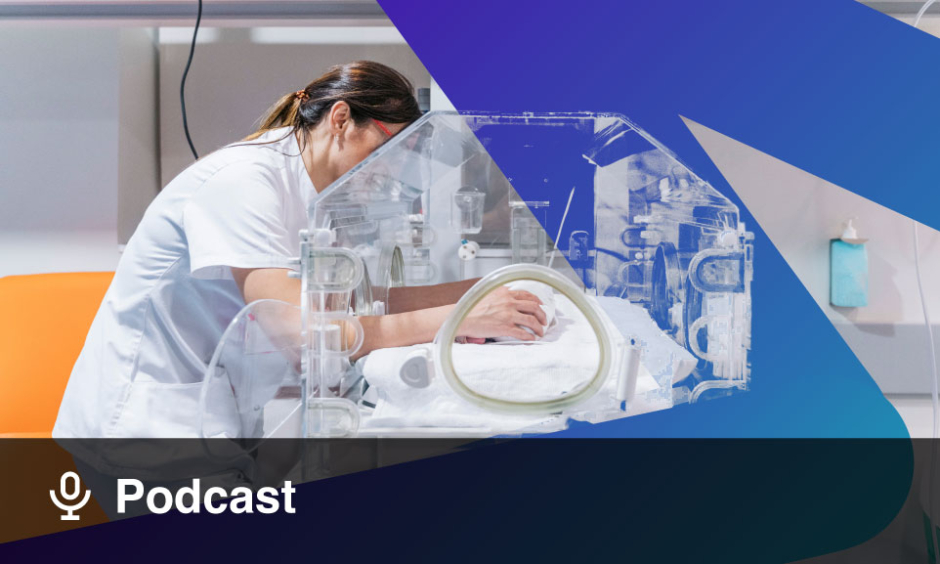Written by James Coker | Reporter, European Medical Journal | @EMJJamesCoker
Disclaimer: The information provided in this article does not imply endorsement of third-party services or products and cannot provide you with health and medical advice. No relevant financial relationship exists between the European Medical Journal and AGA Nanotech Ltd.
![]()
The global antibiotic resistance crisis is one of the biggest health threats mankind faces in the coming decades, with the issue threatening to severely impact the ability to treat common infections, such as pneumonia and tuberculosis.1 It is therefore urgent that entrepreneurs, researchers, and healthcare providers alike find new methods of treating infections that reduce the need for antibiotics. The company AGA Nanotech Ltd., in collaboration with researchers from University College London (UCL), London, UK, have developed a novel technique involving the use of nanoparticles to direct the controlled delivery of antimicrobial agents straight to the site of infection and overcome any antibiotic resistance the bacteria might have. The technology could be available for use in wound care in the relatively near future, and it is hoped it will be adapted in the future for pulmonary, oral, or systemic delivery. To find out more about how delivery system works and how it could be applied in the future we spoke to Mr Adrian Fellows, of AGA Nanotech Ltd., a company partly owned by Gama Healthcare Ltd. in which Mr Fellows holds the position of R & D Director. The discussion also included the scale of the antibiotic resistance issue more generally and strategies for combatting the phenomenon.
Approaches in Oncology
“We took the simple hypothesis that if resistance is the problem, let’s use antimicrobials that don’t give rise to resistance,” said Mr Fellows, explaining his inspiration for the technology. The team began by looking at approaches that were being used in oncology, where highly toxic molecules are delivered to the tumour site without damaging the patient. While none were deemed suitable for carrying highly oxidative biocides, which do not give rise to resistance to infecting bacteria, they discovered that a team at UCL, led by Dr Richard Day, had created a technique which could be utilised for this purpose. Here, nanoparticles could potentially direct the controlled delivery of antimicrobial agents straight to the site of infection by loading particles produced by a Thermally Induced Phase Separation (TIPS) technique developed by Dr Day’s team.
They therefore ran a feasibility study of the method with the team from UCL and got very promising results. This persuaded them to set up AGA Nanotech Ltd. for the specific purpose of developing the technology further.
Encouraging Results
Using funds generated from Gama Healthcare Ltd., another study at UCL was financed as well as a series of tests at University College London Hospital (UCLH) where clinical isolates of both Gram positive and Gram-negative strains of antibiotic resistance organisms were provided to see the effects of delivery of the high-energy oxidative biocides. The tests gradually more closely mimicked the physiological situation. “We got very good results there as well,” elucidated Mr Fellows. “But we were also able to observe that we could get very good initial burst release of the antimicrobials or we could get sustained release over time and particles would work very well in a physiological situation. So, we’re happy that we’ve got particles that we could control the loading, quantifying the various physical parameters of the particles and manage the controlled release of the antimicrobial precursors and the generation of actives in situ and give a very adequate level of activity against the antibiotic resistant organisms.”
Using a combination of sodium percarbonate and tetra acetyl ethylene diamine as donors for the creation of hydrogen peroxide and peracetic acid, the particles were run against the cell line LS in a cytotoxicity study. Better-than-expected results were gained from this, with cytotoxicity no higher than the particles and cells without any active chemical loading, which was in turn no worse than the ultrapure water used as a control. Following this, a couple of in vivo studies were funded by AGA Nanotech, one of which was an infected wound study. While this displayed good results in terms of killing the pathogen present, that particular work could not be published because the protocol compliance was not adequate. Another was a subcutaneous toxicity study with histological follow-up, which also had positive results with no adverse histology in terms of oedema or marked erythema. These studies have provided sufficient encouragement to Dr Fellows and his team to take the concept forward into wound care, and he is hopeful the product will be on the market in 2–3 years for that purpose, especially considering the priority that the European Medicines Agency (EMA) and US Food and Drug Administration (FDA) are giving to the development and approval of solutions to the antimicrobial resistance crisis.2
“We are funding UCL to do a further pre-procedure infection study to see whether the technology is capable of being used in a deeper-seated infection, so we’re looking at an infected bone implant type model,” said Mr Fellows, explaining what the next step will be before progressing down the regulatory approval pathway.
Future Applications
While the use of the technique in wound care is currently looking promising, in order to develop the potential further and progress towards Phase 2 and 3 clinical trials, new funding and partnership arrangements are needed, and this is something AGA Nanotech are looking for at the moment. Although work has not yet begun on adapting the technology for use in areas in the body like the lung, Mr Fellows explained that there is great potential for this to occur. “You could nebulise the particles and they could be used for penetrating relatively deeply into the lung,” he explained. “Also, a gradient of particle size could be very useful for lung and bronchial penetration; here we might expect from the performance characteristics of peracetic acids that they might have very useful benefits in terms of biofilm breakdown in various lung problems, for example chronic obstruction of the lungs and cystic fibrosis, conditions in which antibiotic resistance organisms are gradually appearing.”
He continued: “You can coat the particles so that for instance they could go through the stomach and be released in the gut. We can pegylate the particles, we can put targeting ligands on the outside of the particles. These are all things that have been done for very similar particles in oncology and other related disciplines, including carrying antibiotics to remote sites of fungal infection. That sort of thing is out there for us to pick up and use.”
Advantages of the Technology
Overall, Mr Fellows believes the technology holds distinct features and advantages that could see it stand the test of time. Firstly, and most importantly, it works by targeting multiple sites rather than a single specific enzyme, which prevents organisms from being able to build up resistance. Secondly, he argues that the application costs would be relatively inexpensive, which would be of crucial importance in lower and middle-income countries where much of the antimicrobial resistance problem lies. Additionally, there are the aforementioned additional applications: “The particle precursors are capable of such a wide range of bioengineering flexibility, we believe the technology can be adapted to a very wide range of clinical conditions,” he stated. Another important aspect is the potential to be used in farm animals, where antibiotics are used considerably and is a major source of the antibiotic resistance crisis.3
Finding Solutions
We then moved on to discuss the crisis more generally. Mr Fellows was of the opinion that generally, when the human race had their backs to the wall, they were usually able to find a solution. There has certainly been an awakening to the scale of the problem more recently, and a number of major funding programmes for research into novel alternatives to antibiotics.
Nevertheless, Mr Fellows fears that the crisis is still viewed by many healthcare professionals as being primarily associated with hospital-acquired infections. However, it is far more convoluted and complex than that. In addition to people being intensively treated with antibiotics being a significant factor, antibiotic resistance has also been shown to build up due to the discharge of antibiotics in wastewater over a long period of time, particularly in the developing world.4 Another noteworthy example is the extensive use of antibiotics in farm animals, with resistance known to be able to spread to humans. This led to the World Health Organization (WHO) recommending that the routine use of antibiotics is stopped in the farming and food industry.5
Solutions such as that being developed by AGA Nanotech are essential to averting the growing antimicrobial resistance crisis. It is clear novel ways of thinking and looking beyond conventional treatment methods are key to preventing the crisis becoming a potential catastrophe. We hope the development described by Mr Fellows provides a big step forward in this direction in the future.
“Out of the box thinking will be required to solve this problem. I think what you would call the non-conventional treatments are actually just thinking within different boxes. We believe we have actually thought outside of the box,” he added.
REFERENCES
- UN News. Antibiotic resistance is ‘crisis we cannot ignore,’ UN warns, calling for responsible use of these medicines. 2017. Available at: https://news.un.org/en/story/2017/11/635832-antibiotic-resistance-crisis-we-cannot-ignore-un-warns-calling-responsible-use. Last accessed: 24 April 2018.
- European Medicines Agency. Antimicrobial resistance in human medicine. Available at: http://www.ema.europa.eu/ema/index.jsp?curl=pages/regulation/general/general_content_001689.jsp&mid=WC0b01ac058002d4e9. Last accessed: 24 April 2018.
- NHS Choices. Antibiotic use in farm animals ‘threatens human health’. 2015. Available at: https://www.nhs.uk/news/medication/antibiotic-use-in-farm-animals-threatens-human-health/. Last accessed: 24 April 2018.
- AMR Control. Antibiotics and Resistance Genes in Wastewater Treatment Plants. 2016. Available at: http://resistancecontrol.info/2016/amr-in-food-water-and-the-environment/antibiotics-and-resistance-genes-in-wastewater-treatment-plants/. Last accessed: 24 April 2018.
- World Health Organization (WHO). Stop using antibiotics in healthy animals to prevent the spread of antibiotic resistance. 2017. Available at: http://www.who.int/en/news-room/detail/07-11-2017-stop-using-antibiotics-in-healthy-animals-to-prevent-the-spread-of-antibiotic-resistance. Last accessed: 24 April 2018.








